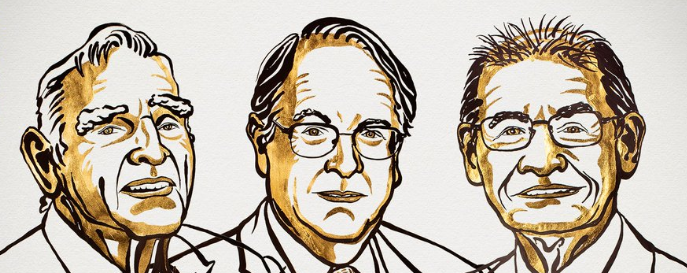2019 Nobel Prize in Chemistry awarded to Goodenough, Whittingham, Yoshino

- Country:
- Sweden
The 2019 Nobel Prize in Chemistry has been jointly awarded to John B. Goodenough, M. Stanley Whittingham, and Akira Yoshino “for the development of lithium-ion batteries.”
"This lightweight, rechargeable and powerful battery is now used in everything from mobile phones to laptops and electric vehicles," the Royal Swedish Academy of Sciences said in a statement on awarding the 9 million Swedish crown ($906,000) prize.
Lithium-ion batteries are used globally to power the portable electronics that we use to communicate, work, study, listen to music and search for knowledge. Lithium-ion batteries have also enabled the development of long-range electric cars and the storage of energy from renewable sources, such as solar and wind power.
The foundation of the lithium-ion battery was laid during the oil crisis in the 1970s. Stanley Whittingham worked on developing methods that could lead to fossil-fuel-free energy technologies. He started to research superconductors and discovered an extremely energy-rich material, which he used to create an innovative cathode in a lithium battery. This was made from titanium disulfide which, at a molecular level, has spaces that can house – intercalate – lithium ions.
The battery’s anode was partially made from metallic lithium, which has a strong drive to release electrons. This resulted in a battery that literally had great potential, just over two volts. However, metallic lithium is reactive and the battery was too explosive to be viable.
John Goodenough predicted that the cathode would have even greater potential if it was made using a metal oxide instead of a metal sulfide. After a systematic search, in 1980 he demonstrated that cobalt oxide with intercalated lithium ions can produce as much as four volts. This was an important breakthrough and would lead to much more powerful batteries.
With Goodenough’s cathode as a basis, Akira Yoshino created the first commercially viable lithium-ion battery in 1985. Rather than using reactive lithium in the anode, he used petroleum coke, a carbon material that, like the cathode’s cobalt oxide, can intercalate lithium ions.
The result was a lightweight, hardwearing battery that could be charged hundreds of times before its performance deteriorated. The advantage of lithium-ion batteries is that they are not based upon chemical reactions that break down the electrodes but upon lithium ions flowing back and forth between the anode and cathode.
Lithium-ion batteries have revolutionized our lives since they first entered the market in 1991. They have laid the foundation of a wireless, fossil-fuel-free society, and are of the greatest benefit to humankind.
The Nobel Prize for achievements in science, peace, and literature have been awarded since 1901 and were created in the will of dynamite inventor and businessman Alfred Nobel.
- READ MORE ON:
- Nobel Prize Chemistry
- 2019 Nobel Prize
- Nobel Prize










